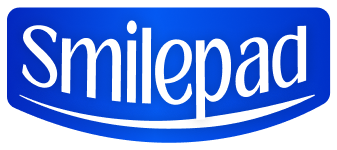Introduction to Postpartum Care Postpartum care is a crucial aspect of recovery for new mothers following childbirth. It encompasses a variety of physical and emotional health needs that emerge in the weeks and months after delivery. Despite the significance of this period, the specific challenges that women face are often overlooked, leading to a gap in adequate support and resources. New mothers may experience a range of issues, including physical discomfort, mood swings, and a considerable amount of emotional adjustments while navigating their new role. Among the most pressing concerns during postpartum recovery is the management of heavy bleeding, known as lochia. This discharge occurs as the body sheds the uterine lining and any residual blood following the birth. For many women, this bleeding can be overwhelming both in volume and duration. Understanding how to effectively manage this bleeding is paramount in ensuring physical comfort and emotional well-being during the early postpartum days. Given this context, maternity pads have been designed specifically to address the unique needs of postpartum women, unlike traditional sanitary pads which are used during menstruation. The differences in absorbency, size, and design reflect the need for products that provide reliable protection while also ensuring comfort during this sensitive period. In this blog, we will explore these distinctions in more detail, as well as highlight the importance of selecting the appropriate products for postpartum care. It is vital for new mothers to be equipped with knowledge about their options, which can greatly improve their postpartum experience. By examining both maternity and sanitary pads, and the ways in which each caters to postpartum care, we can assist women in making informed decisions that prioritize their recovery and overall health. What is Postpartum Bleeding? Postpartum bleeding, also known as lochia, is a natural physiological process that occurs following childbirth. It is essential for new mothers to understand this phenomenon, as it signifies the body’s process of healing and returning to its pre-pregnancy state. After delivery, the body expels the excess blood and tissue that supported the pregnancy, which is crucial for recovery. Lochia is composed of blood, mucus, and uterine tissue, evolving in color and consistency over time. The discharge can initially appear bright red, known as lochia rubra, and typically contains small clots. This stage lasts about three to four days after childbirth. Subsequently, the discharge transitions into a pinkish or brownish hue called lochia serosa, which may last from four to ten days. Finally, after approximately two weeks postpartum, the discharge becomes a lighter yellow or white, referred to as lochia alba, lasting up to six weeks or more in total. The duration of postpartum bleeding varies among women, influenced by factors such as the mode of delivery and individual health conditions. While postpartum bleeding can last four to six weeks on average, this differs significantly from a typical menstrual cycle, which generally lasts about three to seven days and usually does not involve such significant discharge. Understanding the characteristics of lochia can help new mothers differentiate between normal and abnormal bleeding. It is crucial for mothers to monitor their bleeding, as excessive blood loss or the presence of foul odor could indicate complications requiring medical attention. In conclusion, being informed about postpartum bleeding is essential for new mothers. By recognizing the stages and nature of lochia, they can better navigate the early postpartum period and seek necessary support when needed. Challenges Moms Face During Postpartum Recovery Postpartum recovery can be a daunting phase for new mothers, as they encounter a myriad of challenges following childbirth. Among the most significant concerns is managing heavy bleeding, which is often experienced in the first few days post-delivery. This condition, known as lochia, can be particularly overwhelming, requiring mothers to continuously adjust their menstrual products to ensure adequate protection and comfort. The use of appropriate maternity pads becomes crucial in this regard, as they are designed specifically to handle the heavier flow prevalent during the early postpartum weeks. Additionally, new mothers may be susceptible to urinary tract infections (UTIs), which can cause discomfort and further complicate the recovery process. The physical changes that occur during and after birth can contribute to this vulnerability, making it essential for mothers to maintain proper hygiene. Equally concerning is the emotional impact that this period can have, with many women experiencing postpartum depression. This mental health challenge can be exacerbated by the physical pain of vulvar discomfort, which is common among those who have undergone delivery. These emotional and physical trials can greatly influence a mother’s ability to care for herself and her newborn. The journey of adjusting to motherhood often emphasizes the necessity for self-care. Acknowledging personal needs and seeking help can be challenging but is vital for both physical and emotional well-being. Choosing the right menstrual products, particularly maternity pads designed for postpartum care, can significantly enhance comfort during recovery. Products that provide adequate protection while being gentle on the skin can alleviate physical discomfort and promote a sense of security for new mothers. Prioritizing personal health and comfort through informed choices can pave the way for a smoother postpartum experience. Why Regular Sanitary Pads May Not Be Sufficient Postpartum care is a critical aspect of recovery for new mothers, involving a range of considerations, particularly concerning hygiene products. Regular sanitary pads, designed primarily for menstrual flow, may not adequately meet the needs of women experiencing postpartum bleeding, commonly referred to as lochia. This type of flow can significantly differ in volume and consistency from a typical menstrual period. First and foremost, postpartum bleeding can be more substantial in quantity compared to menstruation. Often lasting for several weeks, this discharge can start heavy and gradually lighten, but it may initially involve a flow that exceeds the absorption capabilities of standard sanitary pads. The presence of clots, which can occur during the postpartum period, further complicates the situation. Regular pads may not be designed to handle the larger volume and density associated with clotting, leading to potential leaks and discomfort. Moreover, the

